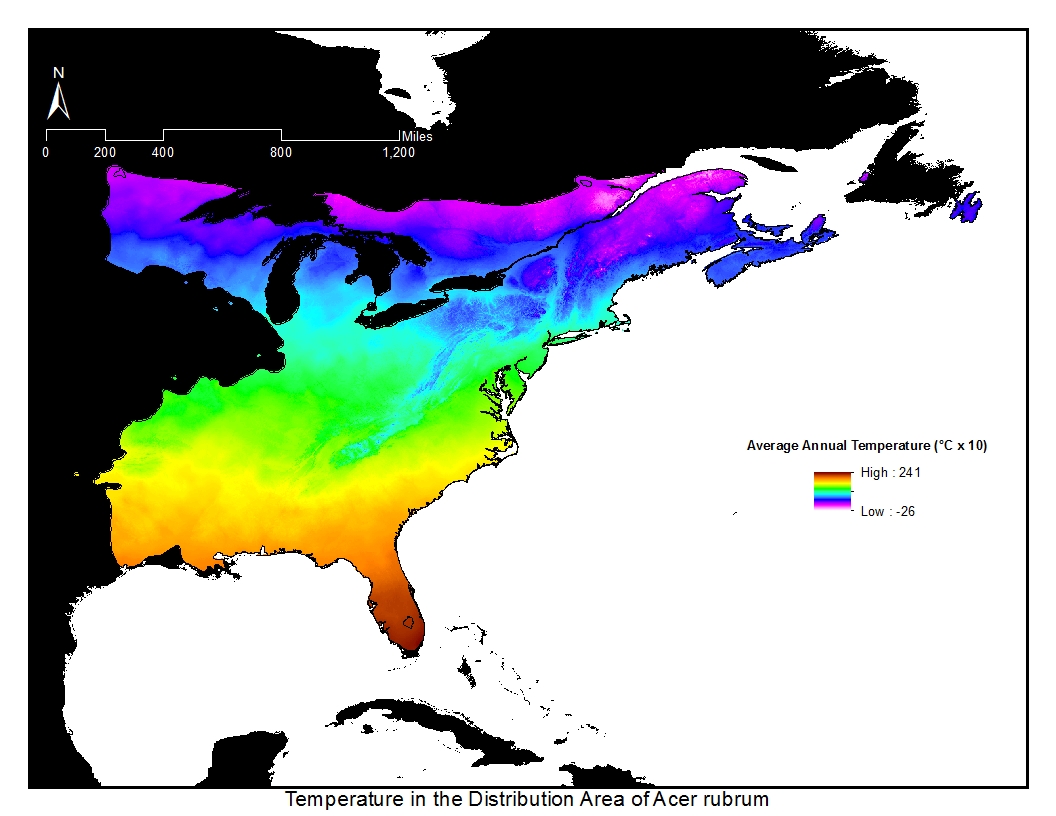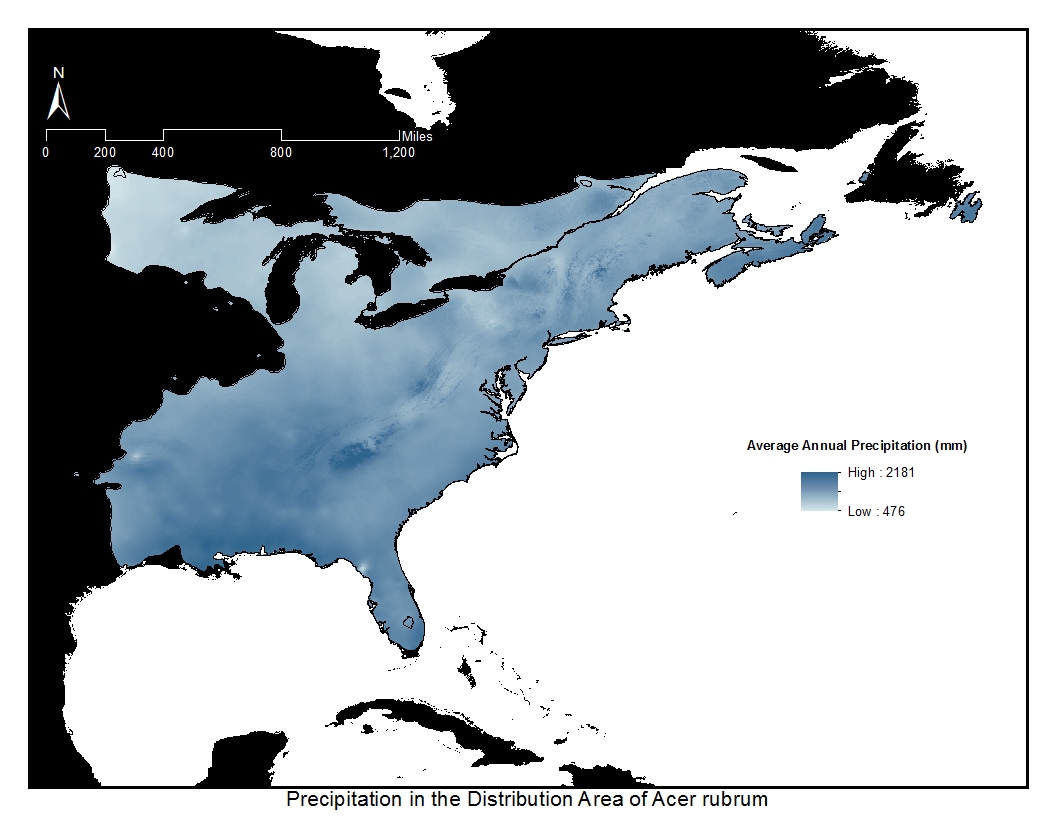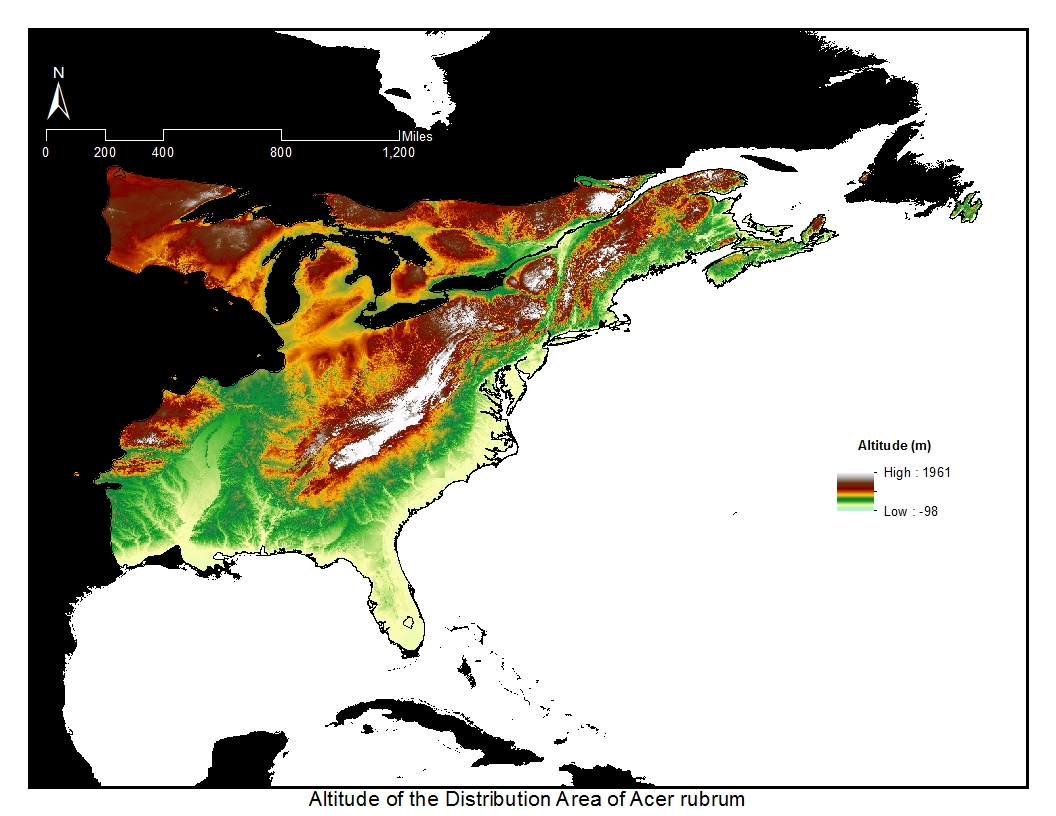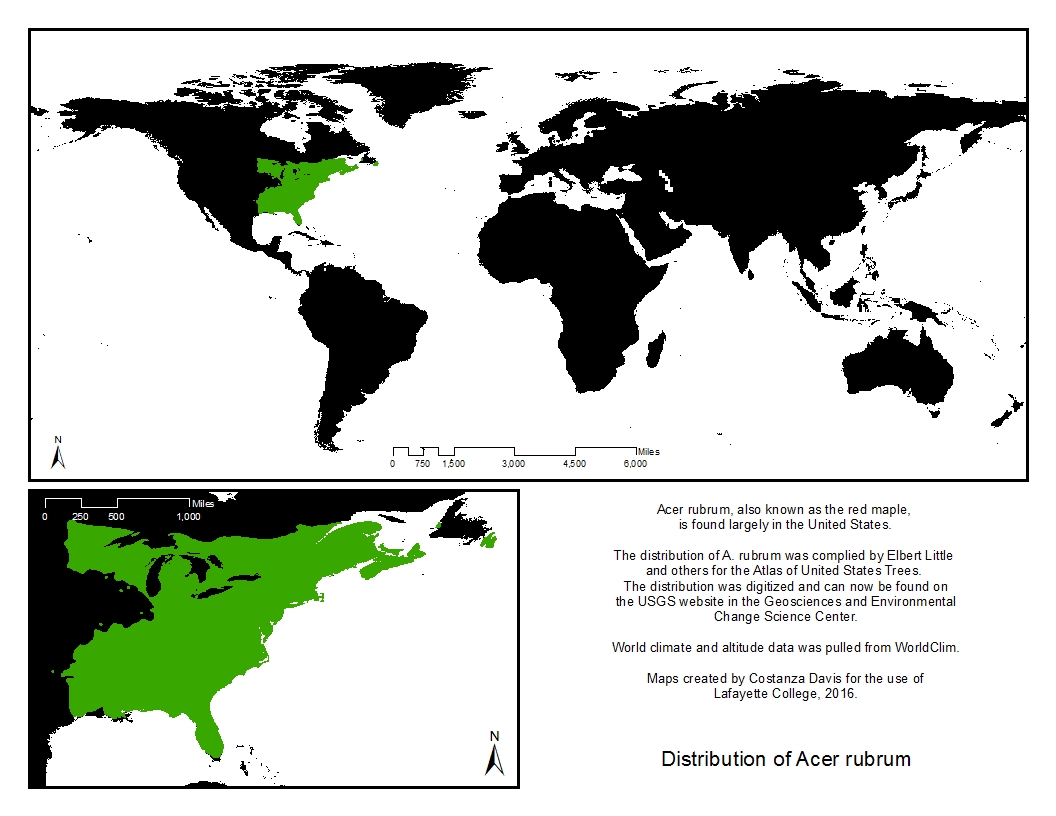The red maple, Acer rubrum, is also known by many other names, such as but not limited to the scarlet maple, the swamp maple, and the soft maple. It can and does natively grow over a large range and is one of the most abundant and widespread trees in eastern North America. Compared to other maples, it has a wider range of climate tolerance, and it can live in zones 3 to 9.
 It is also not picky about soils or parent material, moisture, nutrients, and pH levels. Perhaps it is due to this adaptability that it can be found in more extreme soil-moisture conditions, where other trees cannot. Furthermore, it easily develops more specialized root systems based on soil conditions in its current location. Its preferred locations, however, are moist, moderately well-drained sites at low to intermediate elevations.
It is also not picky about soils or parent material, moisture, nutrients, and pH levels. Perhaps it is due to this adaptability that it can be found in more extreme soil-moisture conditions, where other trees cannot. Furthermore, it easily develops more specialized root systems based on soil conditions in its current location. Its preferred locations, however, are moist, moderately well-drained sites at low to intermediate elevations.
 The red maple produces small, red to yellow flowers from March to May starting at 4 years of age. Some trees are entirely male, others female, and others are monoecious, usually with alternating functionality on branches.
The red maple produces small, red to yellow flowers from March to May starting at 4 years of age. Some trees are entirely male, others female, and others are monoecious, usually with alternating functionality on branches.
The red maple is often used as a shade tree. It can grow between 60 to 90 feet in height, though the largest known red maple is 125 feet tall with a trunk circumference of 16.25 feet.
 On campus are three different cultivars of red maple, namely, ‘Red sunset,’ ‘October glory,’ and ‘Armstrong.’ They can be found by the Williams Center for the Arts, near Farinon, and on the path between Colton Chapel and Pardee. They are notable for their bright red fall coloring.
On campus are three different cultivars of red maple, namely, ‘Red sunset,’ ‘October glory,’ and ‘Armstrong.’ They can be found by the Williams Center for the Arts, near Farinon, and on the path between Colton Chapel and Pardee. They are notable for their bright red fall coloring.
Sources
Walters, Russell S. and Harry W. Yawney. “Red Maple.” Silvics of North America. Ed. Russell M. Burns and Barbara H. Honkala. Washington, DC: Forest Service, United States Department of Agriculture, December 1990. 60-69. Print.
“Acer rubrum.” Missouri Botanical Garden. Missouri Botanical Garden, n.d. Web. 14 April 2016.

